The Thermal Data
Moving on from the restriction test bench the Coolgate CG360 was loaded into the thermal test chamber for a series of tests – consisting of 3 flow rates, each having 3 different fan rpm rates tested. I felt the thermal test data was most important and which you as the reader would be most interested in.
Below is the final data results gathered from at least 2 data logging runs at each flow rate and fan rpm combination. The most stable 15 minute period from each logging run was used and then averaged with the other runs to obtain the data for the table below. A total of 16 temperature sensors were used in the thermal test chamber (8 air in, 2 air out, 3 water in, 3 water out) each take a reading every second and logged via a CrystalFontz unit. The data in the table below is the averaged results of the logging runs which has then been used to create all the plots and tables there-after.
The performance metric of critical importance is the delta between the warm coolant temperature in and the cold ambient air temperature in to the radiator. Given that the system is well insulated and in equilibrium and we know the heat input to the system then we can also calculate a very important number – that is the amount of power required to raise the coolant temperature 1C (or 10C which is more useful reference point).
Let’s take a look at the Delta T results from the tests, in bar chart form first…
I was not too concerned about the actual delta numbers, more so the trend pattern. As we have seen in many of the low FPI radiators the variance at each flow rate is minimal.
Delta T results (as above) is not always helpful when thinking about how many radiators you would need to cool your system. Instead it’s more useful to know the delta/W, or more usefully, the inverse metric of W/delta C. The metric plotted below tells us how many watts are dissipated by the radiator when the coolant rises 10C above ambient temperatures. (W/10 Delta T):
As expected increasing airflow through the radiator is the primary determinant in changing the radiators performance. At this stage we might start to speculate that the comparison results may not be sensational for the CG360 in Push/Pull and hope that it can do enough in Push only to be competitive.
This data can now be plotted as a pretty curve so that an end user can interpolate their own fan speed. Note again that the extrapolation of the curve is much more sensitive to error than in between the tested range. Let’s exclude the push data for now and come back to it:
Evidence that increasing flow rate is yielding very little benefit in performance as the fan speed is increased.
If we now come back to the push data it’s good to compare only the push to push/pull data in an “apples to apples” fashion by only looking at the 1GPM data:
Push only gives around 92.5% (averaged) of the performance of the Push/Pull 1.0 GPM test results on this radiator.
In this next plot all three Push/Pull results at each flow rate were averaged to produce one curve and we compared the results against one of the best and worst performers from the first test group. Averaging reduces test error of course so this helps further to be sure of our data and is more useful therefore for comparing to other radiators.
As you can see the CG360 is only marginally better than the worst performer from Group 1.
Now let’s analyze that data some more….







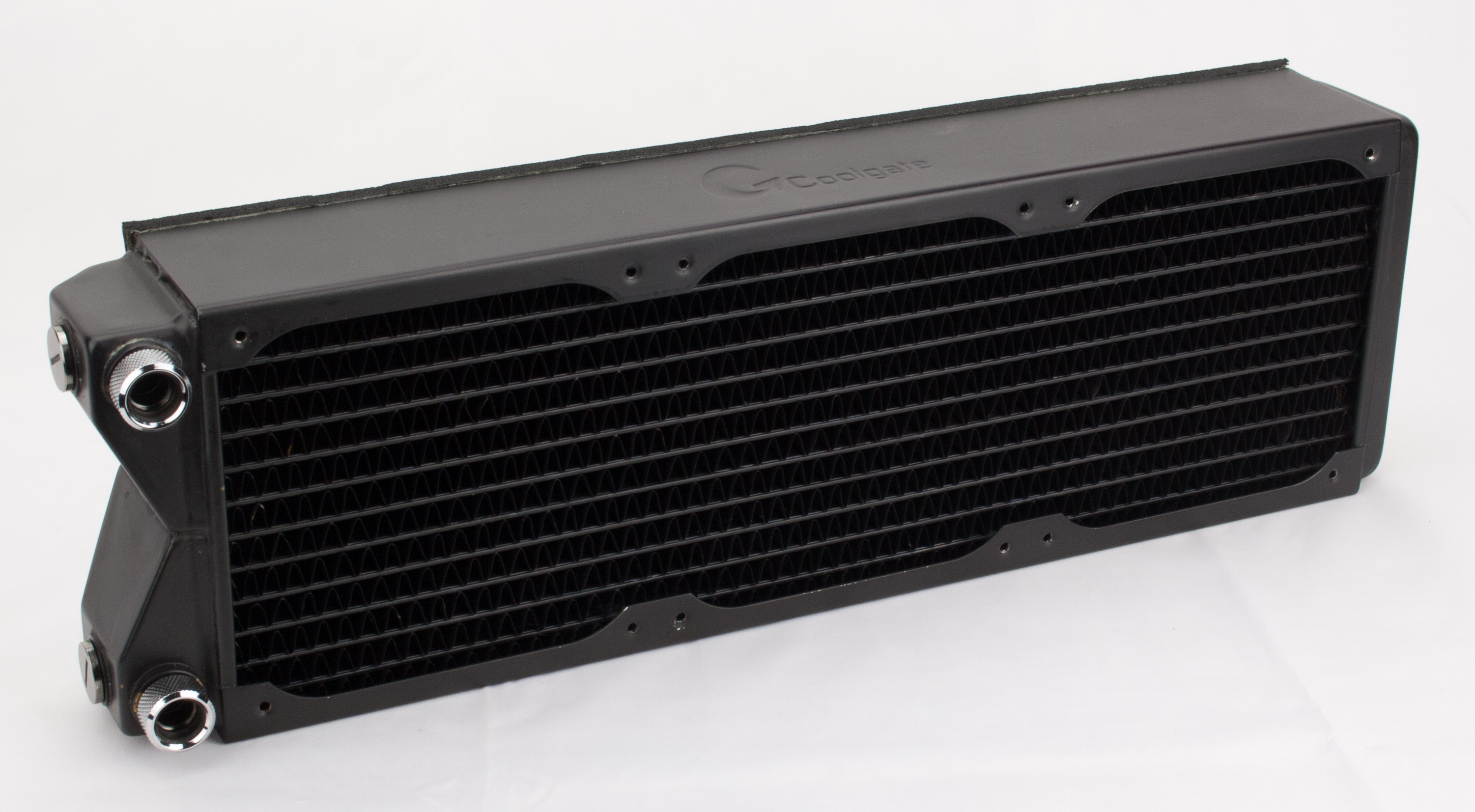
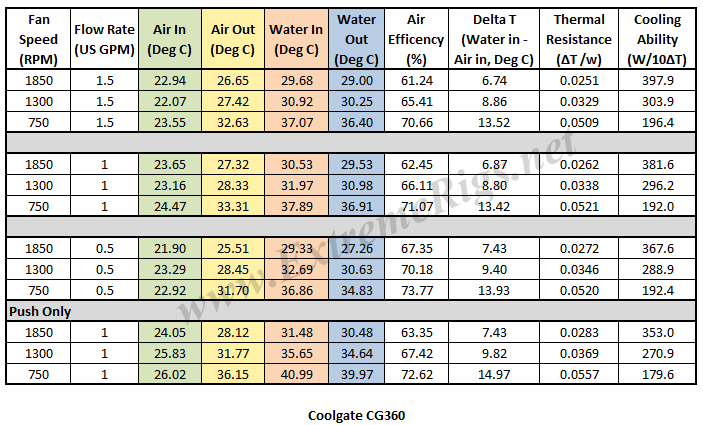
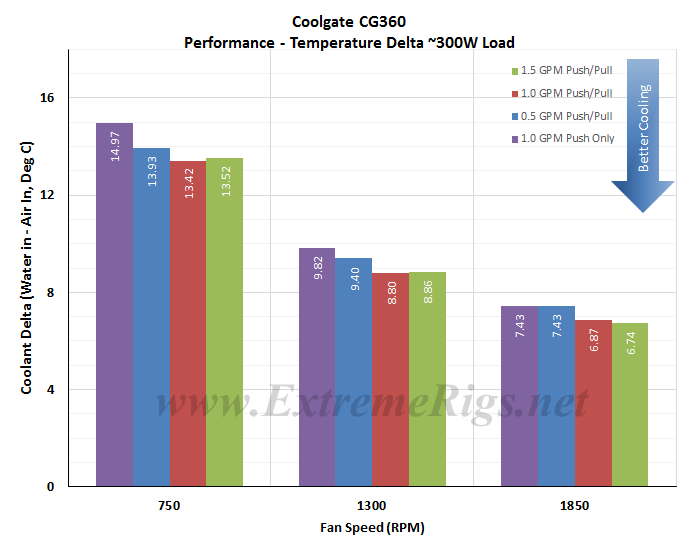
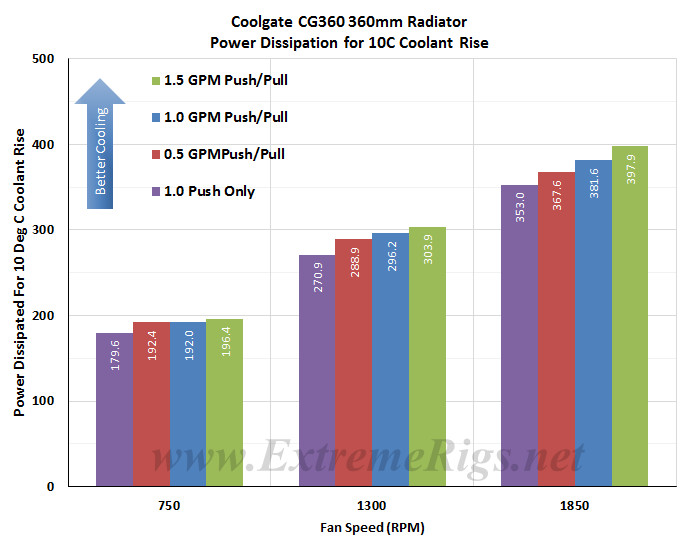
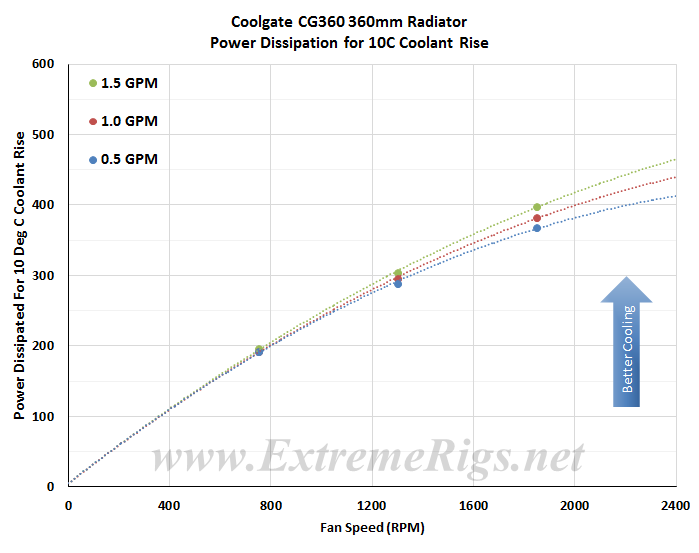
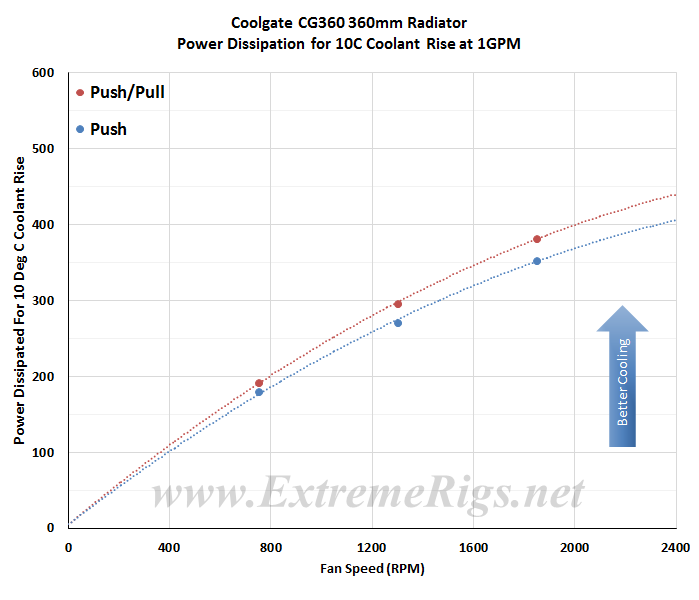
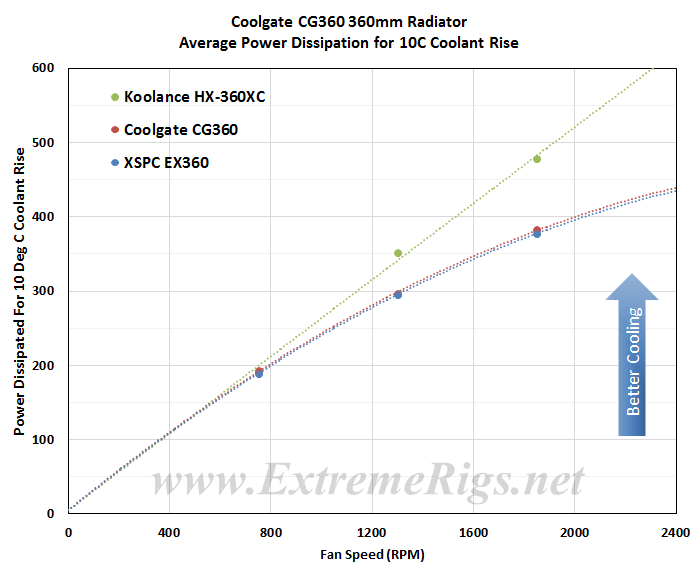



[…] XT45 360 Radiator AquaComputer Airplex Radical Copper 360 Radiator AquaComputer AMS 360 Radiator Coolgate CG 360 Radiator Coolgate G2 360 Radiator EK SE 360 Radiator (Coming Soon) EK PE 360 Radiator EK XTX 360 Radiator EK […]
Comments are closed.